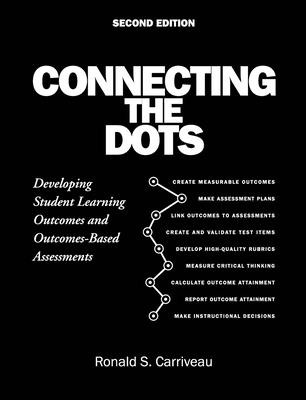
- We will send in 10–14 business days.
- Author: Ronald S Carriveau
- Publisher: Stylus Publishing (VA)
- ISBN-10: 1620364794
- ISBN-13: 9781620364796
- Format: 21.6 x 28.2 x 1.3 cm, hardcover
- Language: English
- SAVE -10% with code: EXTRA
Reviews
Description
Demands for quality at all levels of education are higher than they have ever been. Making clear what students must learn is being stressed by Federal and State governments and by professional and national accreditation organizations.
This book is designed to help faculty and institutions of higher education meet these demands by obtaining, managing, using, and reporting valid outcome attainment measures at the course level; and mapping outcome attainment from the course level to departmental, degree program, and institutional levels, and beyond. It demonstrates how to communicate clearly what students are supposed to know and be able to do; write assessments that measure the expectations; and produce test scores that are valid for their intended use and interpretation, so that valid inferences can be made about students and programs. It is a "how-to" manual that is rich with guidelines, model forms, and examples that will lead the reader through the steps to "connect the dots" from outcomes assessment to outcomes-based reporting. This new edition incorporates several enhancements including additional examples, tables, and figures that help clarify and expand the three-level outcomes and assessment model. A new Chapter 9 introduces a census approach to obtaining outcome attainment measures at the program and institutional levels and shows how to link outcome values to outcome statements from outside sources such as national and professional organizations. Chapter 9 concludes with a discussion on obtaining and using outcome attainment values at the student level with the aid of modern technologies.EXTRA 10 % discount with code: EXTRA
The promotion ends in 19d.13:06:19
The discount code is valid when purchasing from 10 €. Discounts do not stack.
- Author: Ronald S Carriveau
- Publisher: Stylus Publishing (VA)
- ISBN-10: 1620364794
- ISBN-13: 9781620364796
- Format: 21.6 x 28.2 x 1.3 cm, hardcover
- Language: English English
Demands for quality at all levels of education are higher than they have ever been. Making clear what students must learn is being stressed by Federal and State governments and by professional and national accreditation organizations.
This book is designed to help faculty and institutions of higher education meet these demands by obtaining, managing, using, and reporting valid outcome attainment measures at the course level; and mapping outcome attainment from the course level to departmental, degree program, and institutional levels, and beyond. It demonstrates how to communicate clearly what students are supposed to know and be able to do; write assessments that measure the expectations; and produce test scores that are valid for their intended use and interpretation, so that valid inferences can be made about students and programs. It is a "how-to" manual that is rich with guidelines, model forms, and examples that will lead the reader through the steps to "connect the dots" from outcomes assessment to outcomes-based reporting. This new edition incorporates several enhancements including additional examples, tables, and figures that help clarify and expand the three-level outcomes and assessment model. A new Chapter 9 introduces a census approach to obtaining outcome attainment measures at the program and institutional levels and shows how to link outcome values to outcome statements from outside sources such as national and professional organizations. Chapter 9 concludes with a discussion on obtaining and using outcome attainment values at the student level with the aid of modern technologies.

Reviews